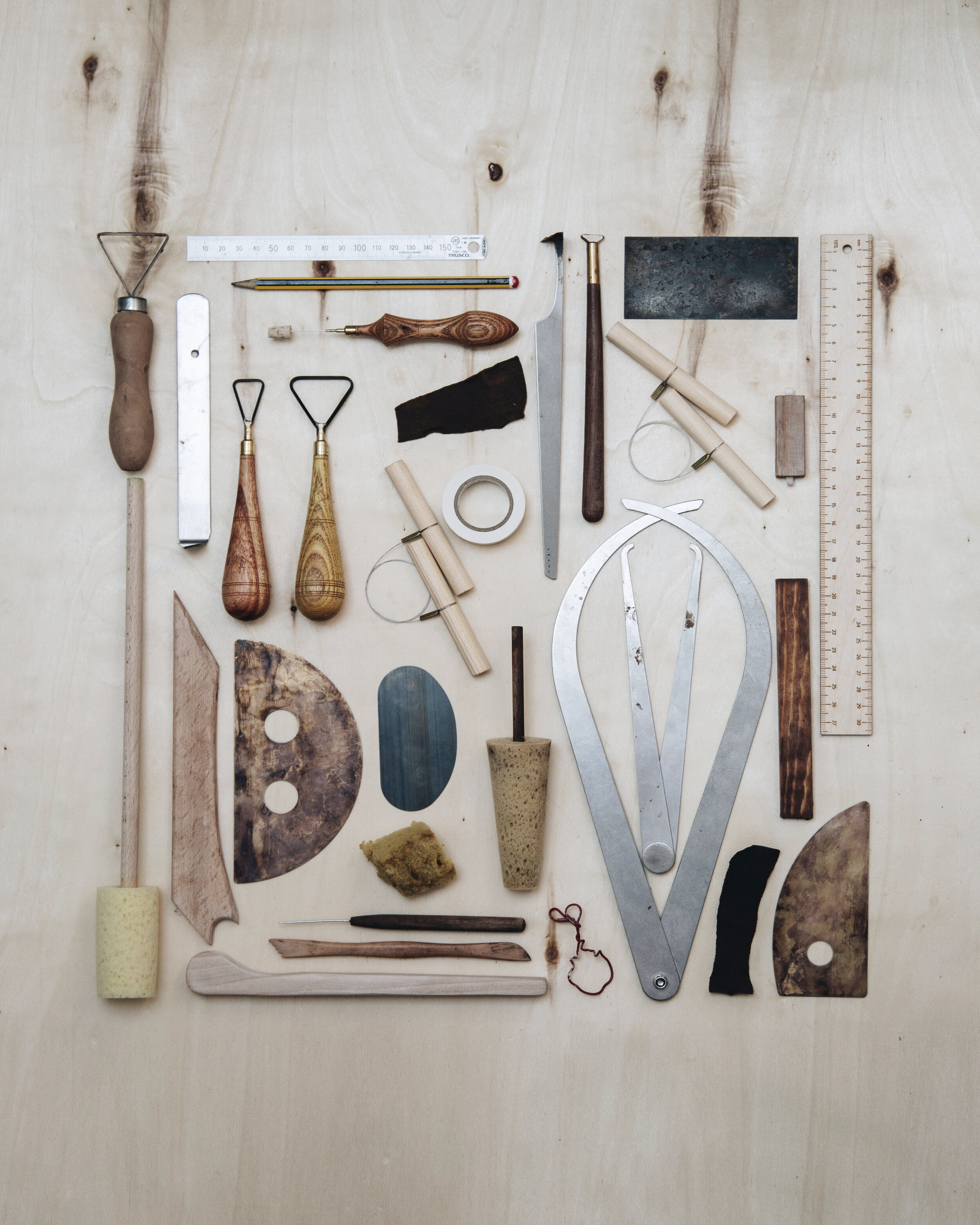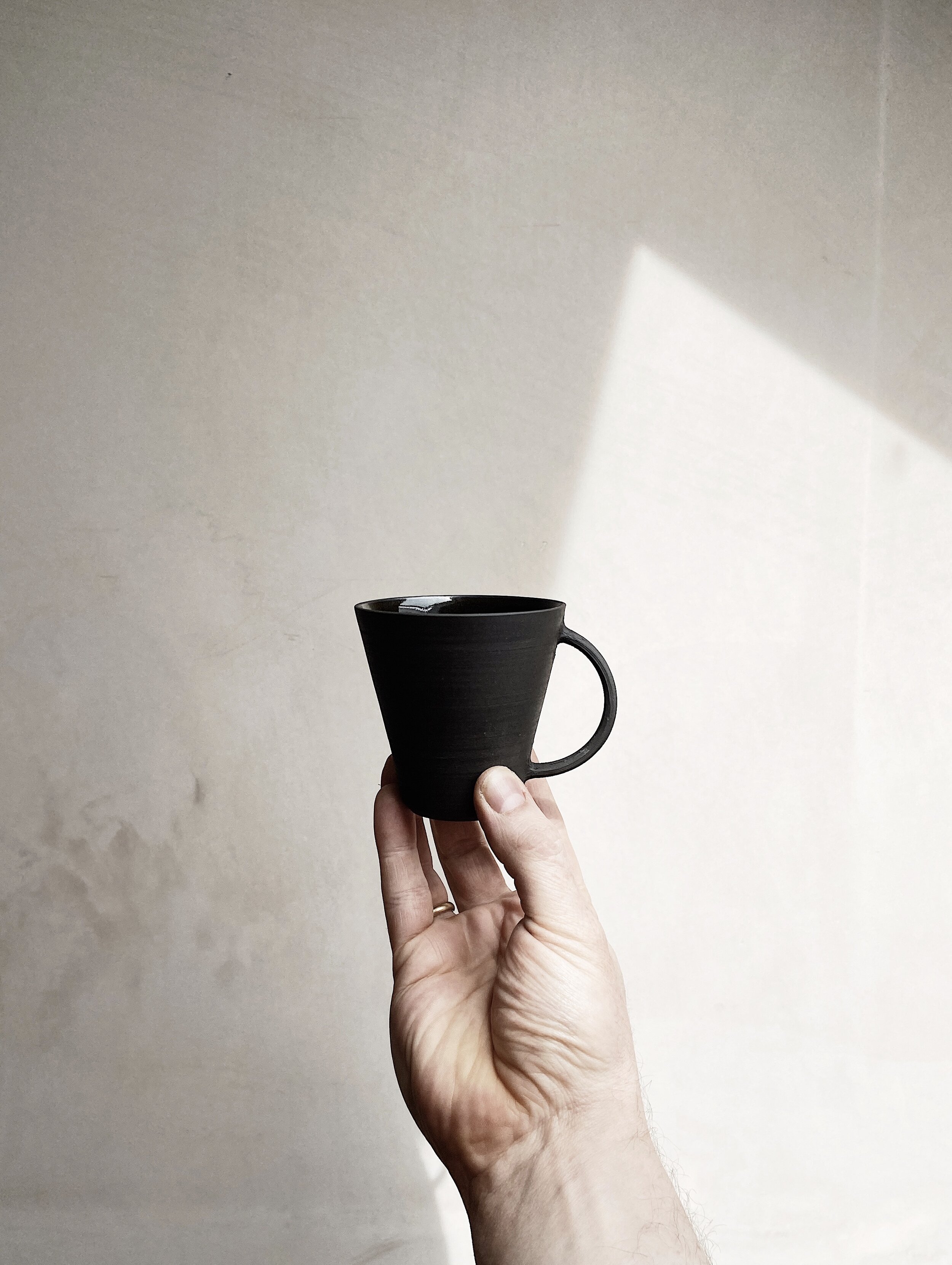10 QUESTIONS WITHSAMUAEL SPARROW
This week, we spoke to Samuel Sparrow, a potter and maker based in Scotland, where we had the opportunity to learn more about his background, design process and experiences while working as a creative in Scotland.
Interview by:
New Norm Magazine
Photography by:
Samuel Sparrow
Social:
https://www.samuelsparrow.com/
https://www.instagram.com/sparrowandco/
https://www.samuelsparrow.com/
"I am a potter and maker based in Scotland. I produce wheel-thrown tableware and objects."
1. What is the story behind your profession and passion? What prompted you to start working as a ceramist?
Samuel: I studied design at Glasgow School of Art. After graduating I moved to London and worked for homeware companies Habitat and Ikea. However, I soon grew dissatisfied with mass production and decided to return to Scotland to carve a creative future based on my own design principles.
In 2018 I sat down at a wheel and threw my first pot. I’d like to say I was a natural. I wasn’t. But I had made something with my own hands and that felt incredible.
From the moment I sat down at a wheel I knew that I had found my place. At the end of a day in the studio I’m tired, fulfilled, satisfied, in both body and mind. I sleep well.
My journey as a potter is going to be a long one. I’m ok with that.
2. What do you consider to be your fundamental design principles? How do you apply them to your work?
S: I’ve always avoided decoration and unnecessary detail, I prefer for the material qualities to be the focus.
My work aims to celebrate simplicity and functionality, highlighting the inherent beauty of objects that are made by hand.
3. What are some of the challenges or advantages have you experienced from working by yourself? While in the absence of teammates, how do you stay inspired and productive?
S: I’ve always preferred working alone and in my own space.
However, I do make sure that I find the time to meet up with friends and fellow creatives in my community. We can be from totally different disciplines, but it’s always good to get other peoples insight, they’re able to put a new perspective on a problem or opportunity. Sometimes just talking through an issue with someone is useful.
As a production thrower you can quickly get lost in the rhythm and process of working with clay. Hours can drift by and at the end of a day in the studio there’s always a moment of surprise when I stand back and see shelves full of work. There’s nothing more rewarding.
4. How would you describe your process when working on a new project?
S: New work starts on the wheel with a ball of clay and some approximate dimensions. For me there has to be the right balance between form and function. The shape of a pot, its weight in your hand, the texture of the clay and feel of the glaze can’t be sketched. I prefer to make first and then refine through iteration until I find the right balance.
5. Clay is one of the main materials that you work with, what is it that you enjoy about working with this specific material?
S: The materials we work with as potters are so elemental. I haven’t created them, they’re here and around us all.
When I sat down at the wheel for the first time I feel in love with clay. Is there any other discipline that encompasses so many processes? From the meditative action of centering, the physicality of wedging clay, to the alchemy of glazing and firing.
6. What’s your favourite piece from your archive?
S: I've thrown over 500 of them in the last year but I still love making my black stoneware cups. I’ve been able to reduce the amount of clay I use to make each one, I don’t think I could throw them any thinner. It’s been a long process but with this form I’ve been able to improve my ability to match the idea in my head.
7. Besides ceramics, you also have a collection of tools for sale in your store. What was the idea behind these items?
S: Given the opportunity I am always keen to find a way to make my own tools. I am motivated by the opportunity to understand how tools are put together and the chance to customise and simplify a design. I’m incredibly appreciative of the makers' who have bought my tools over the last year. Their support has enabled me to push my studio forward and buy my first wheel and kiln. It’s hugely exciting for me to see my tools being used by other potters around the world.
8. How would you describe the creative scene in Scotland and how does it impact your work?
S: Scotland has a hugely supportive and progressive creative scene. However, I struggled to find my voice while living in Glasgow. It wasn’t until I moved to a rural town that I was able to find ways to progress my studio and form lasting connections. The most interesting collaborations have come from working with fellow creatives in my community.
9. If you had to pick one, what would be your favourite homeware/design shop in
Scotland?
S: Bòtann, a new and innovative rubber boot company based here in Dumfries and Galloway. They have ambitious plans to bring wellie making back to Scotland.
10. What can we expect to see from you in the months to come?
S: When the shared studio I work from closed at the beginning of lockdown I decided to setup a temporary studio at home. However, I’m quickly outgrowing this space, I can’t fit in anymore shelving.In the coming months I hope to move into my first studio. I am currently working on a collection of pots for London shop and gallery Maud and Mabel I’m hugely grateful to Karen at Maud and Mabel for giving me the opportunity so early in my development as a potter.
"The materials we work with as potters are so elemental. I haven’t created them, they’re here and around us all."








